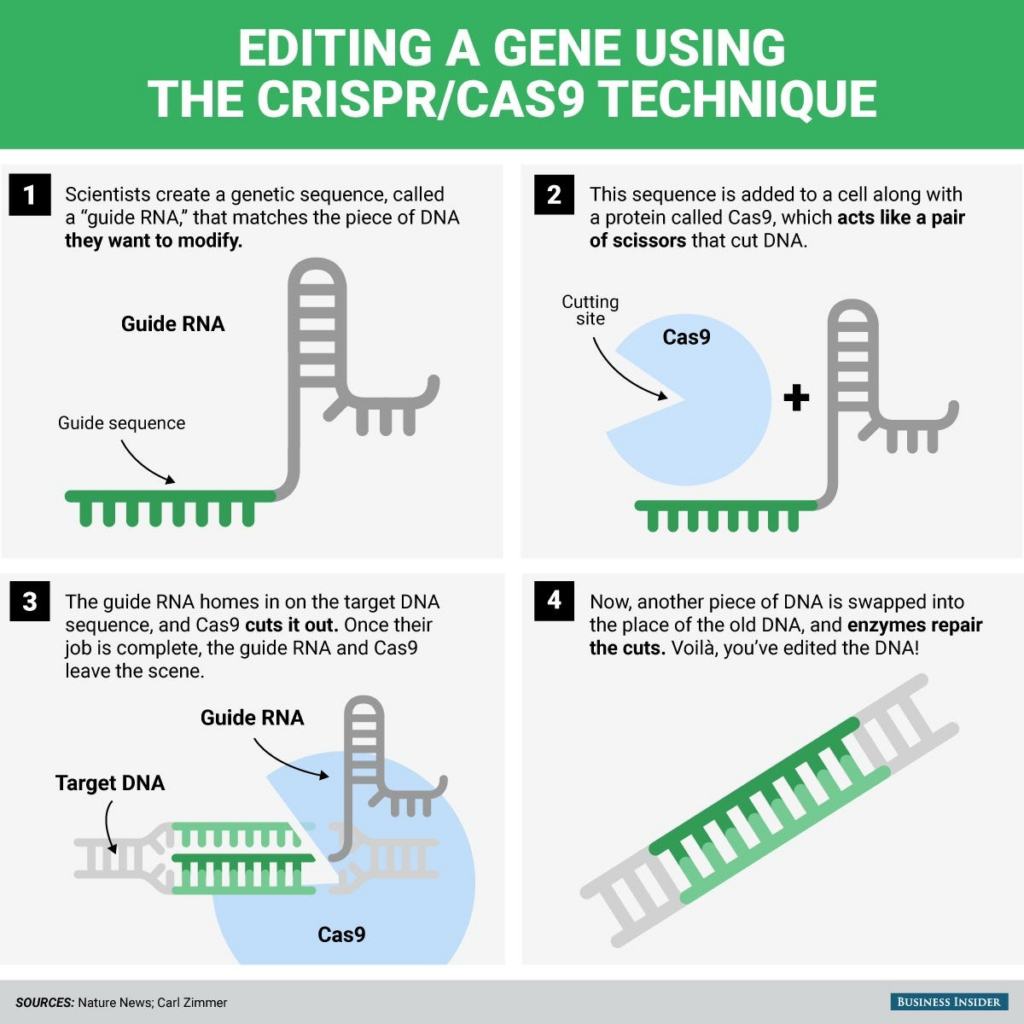
In recent years, the fusion of artificial intelligence (AI) and CRISPR gene-editing technology has ushered in a transformative era in synthetic biology. This powerful combination is revolutionizing fields such as medicine, agriculture, and environmental science, offering unprecedented precision and efficiency in genetic modifications.

AI Enhances CRISPR’s Precision
CRISPR-Cas9 has been celebrated for its ability to make precise edits in the genome. However, determining the most effective targets within the vast expanse of genetic material has been a significant challenge. AI addresses this by analyzing extensive genomic datasets to predict optimal editing sites, thereby increasing the efficacy of CRISPR interventions. For instance, AI algorithms have been utilized to identify gene-editing proteins in public databases and predict heat-tolerant RNA molecules, streamlining the discovery process.
Advancements in Medicine
The integration of AI and CRISPR is making significant strides in medical research. AI’s ability to handle vast datasets enables researchers to identify potential therapeutic targets more efficiently. This synergy has practical applications, such as improving biomanufacturing processes and developing more effective therapies for genetic diseases. Early results are promising, highlighting the transformative potential of these technologies when appropriately harnessed together.
Agricultural Innovations
In agriculture, AI-informed CRISPR is being applied to enhance crop resilience and productivity. By predicting the genetic modifications needed to improve traits such as drought tolerance and disease resistance, AI accelerates the development of hardier crop varieties. This approach not only boosts food security but also promotes sustainable farming practices by reducing the need for chemical interventions.
Environmental Applications
Beyond healthcare and agriculture, the AI-CRISPR partnership holds promise for environmental sustainability. For example, engineered microbes can be designed to break down pollutants or capture carbon dioxide more efficiently. AI aids in optimizing these genetic modifications, making environmental interventions more effective and scalable.
Future Perspectives
The convergence of AI and CRISPR represents a significant leap forward in synthetic biology. As these technologies continue to evolve, their combined application is expected to lead to more sophisticated and precise genetic engineering solutions, addressing some of the most pressing challenges in health, agriculture, and the environment.

Works Cited
“Combining AI and CRISPR Will Be Transformational.” Wired, 2025. https://www.wired.com/story/combining-ai-and-crispr-will-be-transformational.